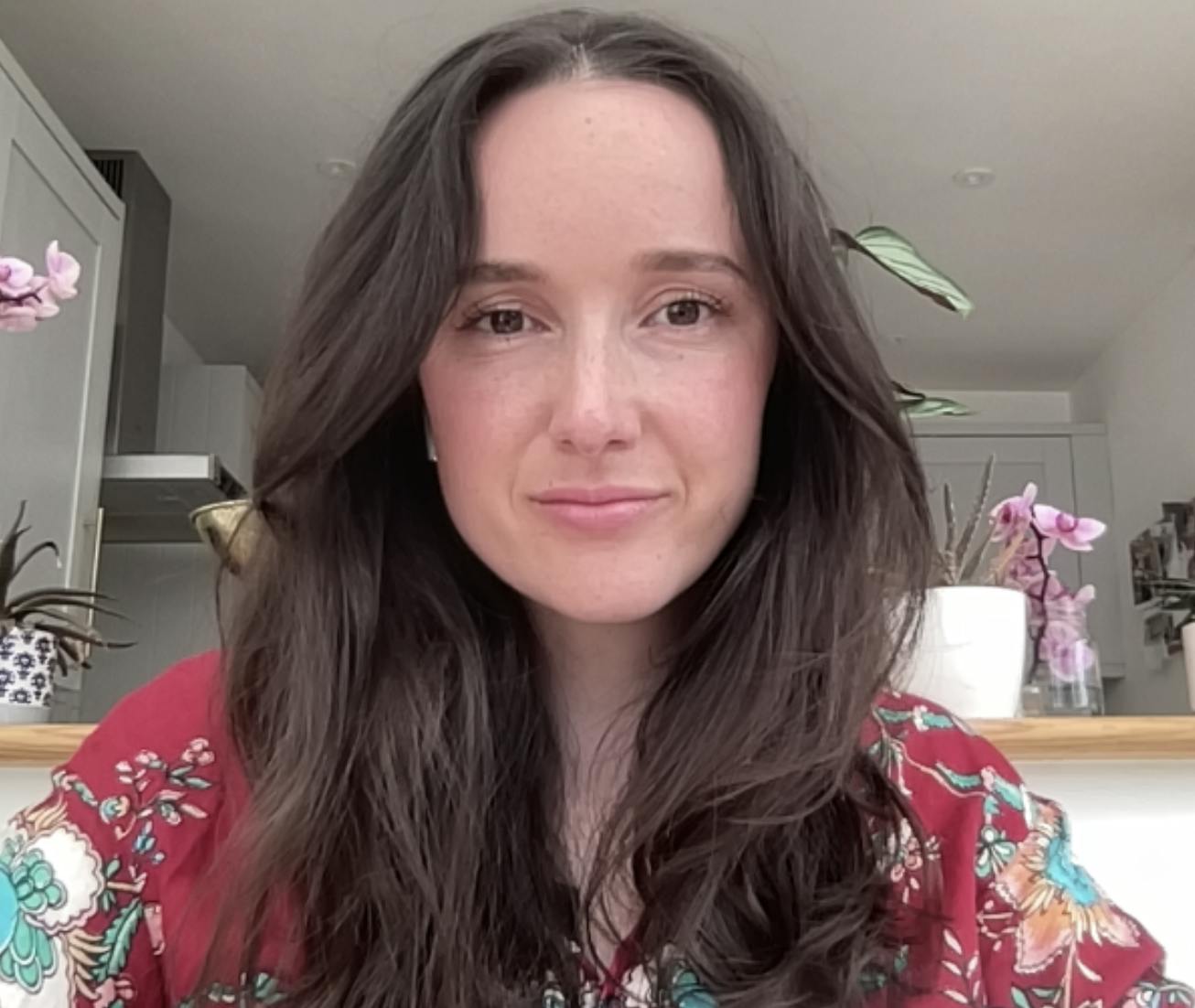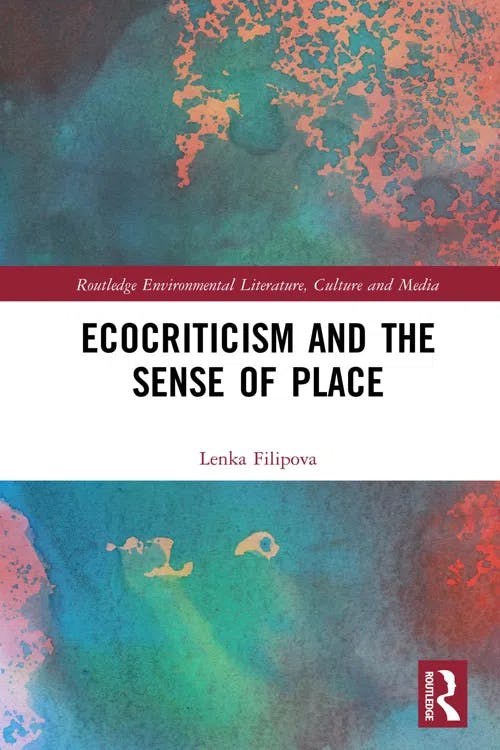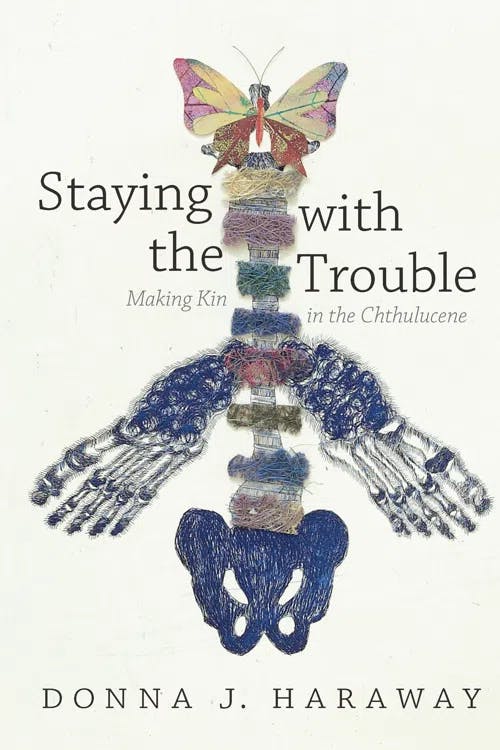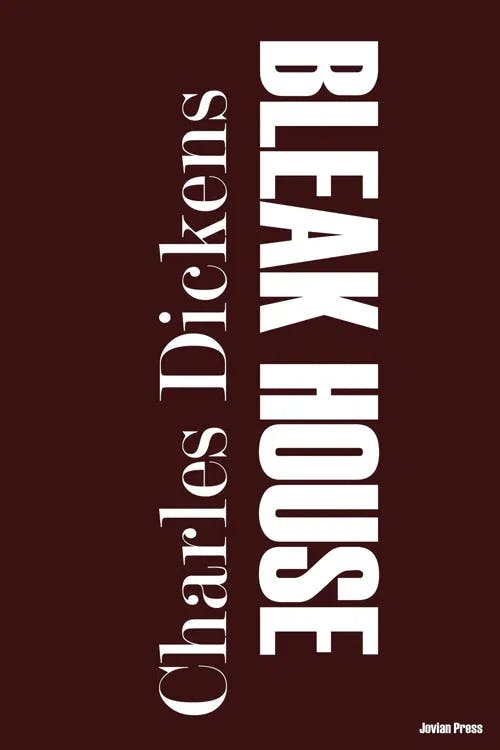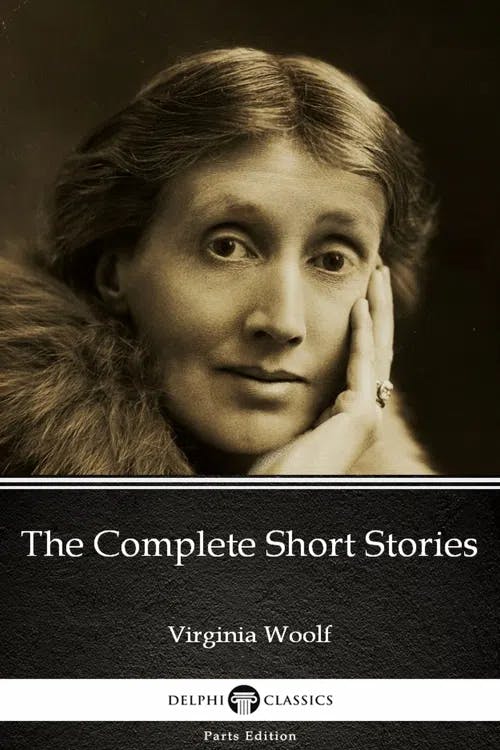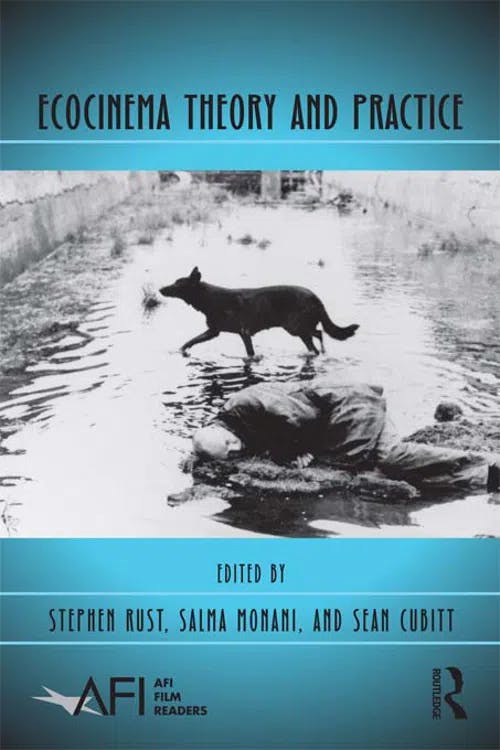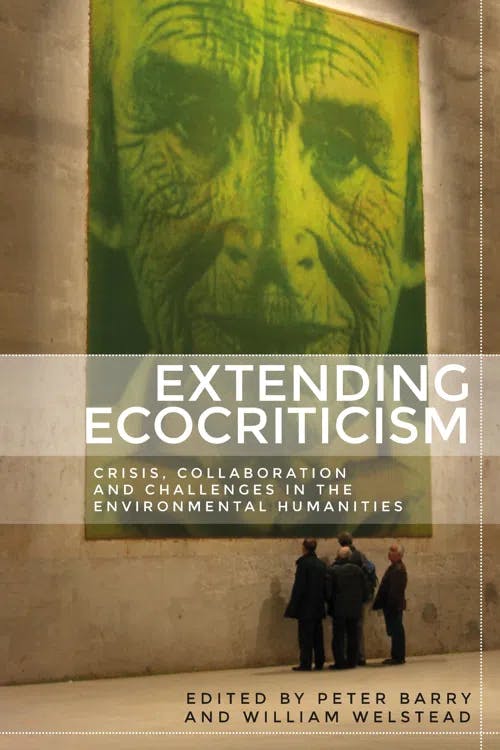What is Ecocriticism?
PhD, Media Arts and English Literature (Royal Holloway, University of London)
Date Published: 15.02.2024,
Last Updated: 21.02.2024
Share this article
Defining ecocriticism
Ecocriticism explores the varied ways that humans and nature interact. Rooted at first in literary studies, ecocriticism is often associated with analyzing literary depictions of nature. For example, William Wordsworth’s “Home at Grasmere” (The Poetical Works of William Wordsworth, 2016) is a Romantic espousal of the natural world as “majesty, and beauty, and response, / A blended holiness of earth and sky”. Conversely, Margaret Atwood presents a dystopian and desolate landscape in Oryx and Crake, where a “distant ocean grind[s] against the ersatz reefs of rusted car parts and jumbled bricks and assorted rubble” (2003). Ecocriticism helps us understand how environmental messages and meaning are woven through such texts, which are often politically charged. Whether this is the heralding of nature as an escape from modernity in much of Wordsworth’s poetry, or Atwood’s sharp critique of human intervention into natural, ecological systems, where she warns against a hierarchy that privileges the human over the non-human through genetic “splicing” and a man-made plague (2003): ecocriticism is often motivated by anxiety around impending environmental ruination, alongside ideas of ecological resilience and imperatives for action.
As ecocriticism has blossomed as a field of study, it has embraced a range of cultural production, from Wordsworth and Atwood through to art, music, film, digital media, and software like Google Earth. With such a broad, interdisciplinary and urgent approach, ecocriticism remains difficult to define: it is part literary studies, part theoretical discourse, part philosophical school, and part political theory. As Lenka Filipova writes, “in the broadest sense of the term,” ecocriticism is
a cultural enquiry into the desires and ideas which make up the many ways humans interact with the non-human environment, how human cultures construct and in turn are constructed by the non-human, and the belief that these very desires, ideas, ways of construction of the human and the non-human, and human ecological imagination are of crucial importance if we want to effectively address our ecological predicament. (2021)
Lenka Filipova
a cultural enquiry into the desires and ideas which make up the many ways humans interact with the non-human environment, how human cultures construct and in turn are constructed by the non-human, and the belief that these very desires, ideas, ways of construction of the human and the non-human, and human ecological imagination are of crucial importance if we want to effectively address our ecological predicament. (2021)
Indeed, ecocriticism focuses on the interconnections between nature and culture. As a critical mode of reading, Cherlyll Glotfelty and Harold Fromm explain that:
Just as feminist criticism examines language and literature from a gender-conscious perspective, and Marxist criticism brings an awareness of modes of production and economic class to its reading of texts, ecocriticism takes an earth-centered approach to literary studies. (The Ecocriticism Reader, 1996)
This earth-centered approach challenges an anthropocentric world view, and often works to critique ideas of human mastery and capitalist cultural modes of valuing — or devaluing — life on earth.
By analyzing the ways that the subject of nature is depicted through language and art, ecocriticism explores historical relationships between nature and culture, and looks towards transformative possibilities for the future. While much ecocriticism centers around art that has explicitly ecological themes, it’s worth noting that an equally rich vein of ecocriticism is in the analysis of literature and art that does not at face value appear to be about the environment. As Donna Haraway writes:
it matters what stories we tell to tell other stories with; it matters what knots knot knots, what thoughts think thoughts, what descriptions describe descriptions, what ties tie ties. It matters what stories make worlds, what worlds make stories. (2016)
Donna J. Haraway
it matters what stories we tell to tell other stories with; it matters what knots knot knots, what thoughts think thoughts, what descriptions describe descriptions, what ties tie ties. It matters what stories make worlds, what worlds make stories. (2016)
What follows is an overview of how ecocriticism has bloomed as a critical field over the years, and examples of how — in Haraway’s words — “stories make worlds,” that explore, examine and advocate for green issues (2016).
How ecocriticism came to be a field of study
Ecocriticism emerged as a field of study in the 1980s, spanning a range of theoretical influences including the sciences and humanities, as well as theory and activism. As Glotfelty and Fromm note, many studies were exploring ecocritical issues prior to the 1980s, yet without a unifying critical term or a network to participate in, “each critic was inventing an environmental approach to literature in isolation,” where work would often be scattered across different names, such as American frontier studies, pastoralism, human ecology, or science and literature (1996). In Ecocriticism (2011), Greg Garrard traces contemporary ecocritical thought back to 1962 with the environmentalist Rachel Carson’s “A Fable Tomorrow” (Silent Spring, 1962 [2022]) as the “founding text of modern environmentalism.” Carson’s parable begins with an idyllic image of “harmony” between a town and the “green fields” and wildlife surrounding it, until
a strange blight crept over the area, and everything began to change. Some evil spell had settled on the community; mystical maladies swept the flocks of chickens, and the cattle and sheep sickened and died. Everywhere was the shadow of death” (1962)
Positioned at first as a supernatural curse, Carson reveals that the “[t]he people had done it themselves,” in a detailed critique of America’s pesticide use (1962). Garrard examines how Carson’s essays place ecology and literature in dialogue with one another, drawing on scientific language as well as literary tropes, like the pastoral and apocalypse, which can be traced back to the Bible (2011), forming what Joseph W. Meeker would first term “literary ecology” in 1974 (The Comedy of Survival: Studies in Literary Ecology). Meeker defined this as the “study of biological themes and relationships which appear in literary works. It is simultaneously an attempt to discover what roles have been played by literature in the ecology of the human species” (1974).
The umbrella label “ecocriticism” was first thought to be coined by William Rueckert in 1978 in his essay “Literature and Ecology: An Experiment in Ecocriticism,” where he referred to it as “the application of ecology and ecological concepts to the study of literature” (The Ecocriticism Reader, 1978 [1996]). Within academia, a marked interest was developing throughout the 1980s and 1990s; although the language around it still remained loose and discursive, where phrases like literary ecology, environmental writing, green studies, ecopoetics or ecocriticism were all used to delve into how the human and non-human coalesce and collide. The Association of Study for Literature and Environment was established in 1992, with the journal ISLE: Interdisciplinary Studies in Literature and Environment launching just a year later, which crystallized ecological literary studies into a defined, self-conscious scholarly school by the early 1990s.
With its newly defined critical scope, ecocriticism began at first with a focus on eighteenth- and nineteenth-century American, transcendental writing and British pastoral literature. For example, Lawrence Buell’s The Environmental Imagination (1996) examined Henry David Thoreau’s works as “representative of green American thinking”, and Romantic Ecology (1991 [2013]) by Jonathan Bate reappraised Wordsworth’s writing, identifying a “green” attitude within his poetry that “attempt[ed] to enable mankind the better to live in the material world by entering into harmony with the environment.” The agenda of this first wave of ecocritical studies, as Buell writes, was to advocate for a more “serious engagement with nonhuman nature” in literary studies, arguing that writers like Thoreau and Wordsworth’s works were emblematic of an “inherent affective if not also spiritual bond between individual humans and the nonhuman” (“Some Emerging Trends,” 2011).
In the 2000s, ecocritism’s second wave sought to broaden its scope, moving beyond Anglophone nature writing, and opening the limits of geography, periodization and genre to explore how environmental justice, culture and identity function within global ecologies. Studies like Patrick D. Murphy’s Literature of Nature: An International Sourcebook (1999) argued for a more diverse and international approach, placing ecocriticism in direct dialogue with postcolonial studies. Questions about which spaces were being discussed abounded. Critics turned their attention to less rural, wild or “open” landscapes, too, examining how urban spaces contributed to the ecocritical conversation. Studies like The Nature of Cities: Ecocriticism and Urban Environments (Bennett and Teague, 1999) and In the Nature of Cities (Heynen and Swyngedouw, 2006) questioned the division between cities and nature, opening up a more discursive space to discuss urban life.
This second wave allowed ecocriticism to engage more fully with the ethical, environmentalist and political implications that nature writing poses. In an interview between Giovanna Di Chiro and the artists and activists Cinder Hypki and Bryant “Spoon” Smith, they discuss the crucial questions: “What counts as ‘green’? Where is the ‘environment’ located? What are we trying to ‘sustain’ and for whom?” (Environmental Justice Reader: Politics, Poetics, and Pedagogy, 2002). Current studies in ecocriticism work to continue responding to these central questions using a broad range of cultural productions and theory using interdisciplinary critical strands like posthumanism, ecofeminism, ecosemiotics, and deep ecology to do so.
From Carson’s critique of the “shadow” of synthetic pesticide use in the 1960s, ecocriticism has rapidly risen as a field of study and methodological approach (1962). This critical surge directly parallels an increasing awareness of global climate change and public anxiety, as global temperatures, pollution and sea levels also continue to rise. In these troubling times of what is being called “The Anthropocene”, critically engaging with ecological concerns has never been more pressing.
Examples of ecocritical literature
By parsing through how nature is portrayed in literature, we are able to gain insight into different social and political contexts – shedding light on historical engagements with living worlds, as well as present and pressing issues. For example, Charles Dickens’s smoggy industrial fiction can be read as a eco-conscious commentary on pollution, where in Bleak House:
Fog everywhere. Fog up the river, where it flows among green aits and meadows; fog down the river, where it rolls defiled among the tiers of shipping and the waterside pollutions of a great (and dirty) city. (1852 [2017])
Charles Dickens
Fog everywhere. Fog up the river, where it flows among green aits and meadows; fog down the river, where it rolls defiled among the tiers of shipping and the waterside pollutions of a great (and dirty) city. (1852 [2017])
From Dickens’ caution of fog, to Charlotte Mew’s modernist critique of London as “a world of tree-haunted men and men-haunted trees” (Collected Poems and Prose, 1981), to the brutal, post-apocalyptic “gray” landscapes of Cormac McCarthy’s The Road (2006), to Rumaan Alam’s cautious Leave the World Behind (2020), which teeters on the brink of disaster: writers continue to respond to and raise questions about how to ethically engage with a rapidly changing world (see our guide on climate fiction for more). For example, Suzanne Collins’s eco-apocalyptic The Hunger Games (2008) can be read as an indictment of anthropocentrism, with its cruel, exploitative strain of capitalism that underpins the Capitol.
Not always motivated by dark dystopian themes, Virginia Woolf’s “Kew Gardens” (The Complete Short Stories by Virginia Woolf, 1921 [2017]) employs a different approach. Woolf’s short story can be read as a challenge to anthropocentric hierarchies that privilege the human, as her fluid focalization shifts to include the perspective of a snail:
The snail had now considered every possible method of reaching his goal without going round the dead leaf or climbing over it. Let alone the effort needed for climbing a leaf, he was doubtful whether the thin texture which vibrated with such an alarming crackle when touched even by the tip of his horns would bear his weight; and this determined him finally to creep beneath it, for there was a point where the leaf curved high enough from the ground to admit him. (1921 [2017])
Virginia Woolf
The snail had now considered every possible method of reaching his goal without going round the dead leaf or climbing over it. Let alone the effort needed for climbing a leaf, he was doubtful whether the thin texture which vibrated with such an alarming crackle when touched even by the tip of his horns would bear his weight; and this determined him finally to creep beneath it, for there was a point where the leaf curved high enough from the ground to admit him. (1921 [2017])
Thus, Woolf’s “Kew Gardens” depicts a lively ecosystem full of snails, flowers, dead leaves, and humans alike.
Ecocinema
In Ecocinema Theory and Practice, Stephen Rust and Salma Monani write:
From an ecocritical perspective, environment is not just the organic world, [...] it is the whole habitat which encircles us, the physical world entangled with the cultural. It is an ecology of connections that we negotiate to make our meanings and our livings. In this habitat, cinema is a form of negotiation, a mediation that is itself ecologically placed as it consumes the entangled world around it, and in turn, is itself consumed. (2012)
Edited by Stephen Rust, Salma Monani, and Sean Cubitt
From an ecocritical perspective, environment is not just the organic world, [...] it is the whole habitat which encircles us, the physical world entangled with the cultural. It is an ecology of connections that we negotiate to make our meanings and our livings. In this habitat, cinema is a form of negotiation, a mediation that is itself ecologically placed as it consumes the entangled world around it, and in turn, is itself consumed. (2012)
Indeed, cinema’s cultural negotiations have catalytic consequences for how we think about the natural world, with films like An Inconvenient Truth (Guggenheim, 2006) and Black Fish (Cowperthwaite, 2013) sparking new awareness and conversation around the climate crisis and animal captivity.
Ecocinema can take many different forms. Documentaries or mockumentaries like Carnage (Amstell, 2017) handle overt ecocritical consciousness narratives, or disaster films can present images of fast-approaching asteroids, crashing tidal waves or a frostbitten Statue of Liberty, like Don’t Look Up (McKay, 2021) and The Day After Tomorrow (Emmerich, 2004). Ecological thought can also be seen in the barren wastelands of Mad Max: Fury Road (Miller, 2015), the lush spectacle of Pandora in Avatar (Cameron, 2009), or the shimmering refractions in Annihilation (Garland, 2018), which all question the ways human activity threatens life on earth.
As with literature, ecocriticism can equally be applied to films that are not ostensibly about the environment. While nature documentaries like Cowspiracy (Andersen & Kuhn, 2014) are perhaps the most obvious routes into thinking environmentally about film, what happens when an ecocritical lens is applied to films that at face value have nothing to do with environmental issues? Take the below clip from The Blues Brothers (Landis, 1980) as an example. This famous car chase is intended for humor, with the sheer number of cars involved (juxtaposed against the nonchalance of the film’s protagonists) creating a fun slapstick dynamic. Through an ecocritical lens however, this slapstick perhaps shifts towards satire. The ridiculous amount of cars, the exaggerated spectacle of their endless crashing, the surreal sprawl of roads in the city — all of this could easily be read as a satirical dig at the consumerist, spectacle driven petroculture of American society. Regardless of how the scene was intended to be read, ecocriticism allows for new ways of reading film.
Ecomusicality
Ecomusicality listens to the complex and cacophonous connections between “music and sound, culture and society, nature and environment” (Allen and Dawe, Current Directions in Ecomusicology, 2015). These can be heard in many different forms: from the pastoral notes in English folk music; to Cosmo Sheldrake’s Wake Up Calls (2020), which is composed of recorded birdsongs from endangered British species; to ideas of sustainability, music and technology, where Mark Pedelty writes that the
last beat of Britney Spears’s “Toxic” (2004) is not found in the final measure of the song, but rather in the metallic “thunk” a broken iPod makes when it hits empty soup cans in a local landfill. (2011)
Mark Pedelty
last beat of Britney Spears’s “Toxic” (2004) is not found in the final measure of the song, but rather in the metallic “thunk” a broken iPod makes when it hits empty soup cans in a local landfill. (2011)
Art
From Edward Mitchell Bannister’s nineteenth-century American landscapes, which present a vast pastoral image of the natural world; to Mary Mattingly’s sculptural “Life of Objects” (2013), which depicts a naked human body under a crushing ball of Mattingly’s unwanted twine-wrapped possessions: studies of how art and ecology allow for rich explorations of how to engage ethically with the world. As Peter Barry and William Welstead write in Extending Ecocriticism (2017),
[s]cience and art can and should work together and ecocriticism is well placed to mediate a common understanding between these two cultures.
Edited by Peter Barry and William Welstead
[s]cience and art can and should work together and ecocriticism is well placed to mediate a common understanding between these two cultures.
The future of ecocritical studies
From its critical inception and its first roots in literature, ecocriticism has broadened its scope to embrace different disciplines. Studies like Ecocriticism and Indigenous Studies (2016) discuss biosemiotics, multispecies ethnography, cosmopolitics and trans-Indigeneity. In media studies, anxieties about nuclear annihilation are played out in video games like Fallout, or the ecocatostrophe in The Last of Us. Intertwined with ecocriticism, critical animal studies has received an increasing amount of scholarly attention in recent years, asking pressing questions like “[w]ho or what is human?” (Routledge Handbook of Human-Animal Studies, 2014), whereas Gaia theory and deep ecology demand radical reorientations of value within ecosystems, which decenters the human and handles the Earth as a dynamic process, rather than a fixed object (Gaia, Psyche and Deep Ecology, 2019).
As ecocriticism expands and develops within and against anthropocentric contexts, it continues to navigate the political, social and real-life imperatives of imagined worlds.
Further reading on ecocriticism & resources on Perlego
Azzarello, R. (2016) Queer Environmentality. Taylor and Francis. Available at: https://www.perlego.com/book/1634832/queer-environmentality-ecology-evolution-and-sexuality-in-american-literature-pdf
Chen, C., MacLeod, J. and Neimanis, A. (2013) Thinking with Water. McGill-Queen’s University Press. Available at: https://www.perlego.com/book/3551327/thinking-with-water-pdf
Clark, T. (2015) Ecocriticism on the Edge. Bloomsbury Publishing. Available at: https://www.perlego.com/book/859501/ecocriticism-on-the-edge-the-anthropocene-as-a-threshold-concept-pdf
Huggan, G. and Tiffin, H. (2015) Postcolonial Ecocriticism. Taylor and Francis. Available at: https://www.perlego.com/book/1560224/postcolonial-ecocriticism-literature-animals-environment-pdf
Kalaidjian, A. (2020) Exhausted Ecologies. Cambridge University Press. Available at: https://www.perlego.com/book/4223245/exhausted-ecologies-modernism-and-environmental-recovery-pdf
Lilley, D. (2019) The New Pastoral in Contemporary British Writing. Taylor and Francis. Available at: https://www.perlego.com/book/1379188/the-new-pastoral-in-contemporary-british-writing-pdf
Moore, J. (2015) Capitalism in the Web of Life. Verso. Available at: https://www.perlego.com/book/731200/capitalism-in-the-web-of-life-ecology-and-the-accumulation-of-capital-pdf
External resources
Garrard, G. (ed.) (2014) The Oxford handbook of ecocriticism. New York, NY: Oxford University Press. Available at: https://global.oup.com/academic/product/the-oxford-handbook-of-ecocriticism-9780199742929
Huggan, G. & Tiffin, H. (2015) Postcolonial Ecocriticism : Literature, Animals, Environment. Routledge. Available at: https://www.routledge.com/Postcolonial-Ecocriticism-Literature-Animals-Environment/Huggan-Tiffin/p/book/9781138784192
Iovino, S. & Oppermann, S. (2014) Material Ecocriticism. Bloomington: Indiana University Press. Available at: https://iupress.org/9780253013989/material-ecocriticism/
Mondello, K. (2022) “The Value of Ecocriticism?”, in Nature and Culture. 17.1 Available at: http://dx.doi.org.ezproxy01.rhul.ac.uk/10.3167/nc.2022.170105
What is ecocriticism?
When was the term “ecocriticism” first used?
What are some other terms that are sometimes used instead of or in conjunction with ecocriticism?
Bibliography
Adamson, J. Evans, M. M., Stein, R. (2002) Environmental Justice Reader: Politics, Poetics, and Pedagogy. University of Arizona Press. Available at: https://search.worldcat.org/title/49277391
Alam, R. (2020) Leave the World Behind. Bloomsbury. Available at: https://www.bloomsbury.com/uk/leave-the-world-behind-9781526672056/
Allen, A. and Dawe, K. (2015) Current Directions in Ecomusicology. 1st edn. Taylor and Francis. Available at: https://www.perlego.com/book/1643654/current-directions-in-ecomusicology-music-culture-nature-pdf
An Inconvenient Truth. (2006) Directed by Davis Guggenheim. USA: Participant Productions.
Annihilation. (2018) Directed by Alex Garland. USA: Paramount.
Atwood, M. (2003) Oryx and Crake. Virago. Available at: https://www.virago.co.uk/titles/margaret-atwood/oryx-and-crake/9780349004068/
Avatar. (2009) Directed by James Cameron. USA: 20th Century Fox.
Barry, P. and Welstead, W. (2017) Extending Ecocriticism. Manchester University Press. Available at: https://www.perlego.com/book/1526290/extending-ecocriticism-crisis-collaboration-and-challenges-in-the-environmental-humanities-pdf
Bate, J. (2013) Romantic Ecology. Taylor and Francis. Available at: https://www.perlego.com/book/1678482/romantic-ecology-routledge-revivals-wordsworth-and-the-environmental-tradition-pdf
Bennett, M. and Teague, D. (1999) The Nature of Cities: Ecocriticism and Urban Environments. University of Arizona Press. Available at: https://search.worldcat.org/title/nature-of-cities-ecocriticism-and-urban-environments/oclc/41039745
Black Fish. (2013). Directed by Gabriela Cowperthwaite. USA: CNN Films.
Buell, L. (1996) The Environmental Imagination. Harvard University Press. Available at: https://www.perlego.com/book/2648082/the-environmental-imagination-thoreau-nature-writing-and-the-formation-of-american-culture-pdf
Buell, L. (2011) “Some Emerging Trends,” Qui Parle, 19.2. Available at: https://www.jstor.org/stable/10.5250/quiparle.19.2.0087
Carnage. (2017) Directed by Simon Amstell. BBC: United Kingdom.
Carson, R. (1962) Silent Spring. Penguin. Available at: https://www.penguin.co.uk/books/57236/silent-spring-by-rachel-carson-introduction-by-lord-shackleton-preface-by-julian--huxley-afterword-by-linda-lear/9780141184944
Collins, S. (2008) The Hunger Games. Scholastic Press. Available at: https://search.worldcat.org/title/181516677
Cowspiracy. (2014) Directed by Kip Anderson and Keegan Kuhn. USA: A.U.M. Films.
Dickens, C. (2017) Bleak House. [edition unavailable]. Jovian Press. Available at: https://www.perlego.com/book/1886121/bleak-house-pdf
Don’t Look Up. (2021) Directed by Adam McKay. USA: Hyperobject Industries.
Fellows, A. (2019) Gaia, Psyche and Deep Ecology. Taylor and Francis. Available at: https://www.perlego.com/book/1615713/gaia-psyche-and-deep-ecology-navigating-climate-change-in-the-anthropocene-pdf
Filipova, L. (2021) Ecocriticism and the Sense of Place. Taylor and Francis. Available at: https://www.perlego.com/book/2567533/ecocriticism-and-the-sense-of-place-pdf
Garrard, G. (2011) Ecocriticism. 2nd edn. Taylor and Francis. Available at: https://www.perlego.com/book/1514112/ecocriticism-pdf
Glotfelty, C, and Fromm, H. (1996) The Ecocriticism Reader: Landmarks in the Literary Ecology. University of Georgia Press. Available at: https://ugapress.org/book/9780820317816/the-ecocriticism-reader/
Haraway, D. (2016) Staying with the Trouble. Duke University Press. Available at: https://www.perlego.com/book/1458369/staying-with-the-trouble-making-kin-in-the-chthulucene-pdf
Heynen, N., Kaika, M. and Swyngedouw, E. (2006) In the Nature of Cities. Taylor and Francis. Available at: https://www.perlego.com/book/1624388/in-the-nature-of-cities-urban-political-ecology-and-the-politics-of-urban-metabolism-pdf
Marvin, G. and McHugh, S. (2014) Routledge Handbook of Human-Animal Studies. Taylor and Francis. Available at: https://www.perlego.com/book/1624237/routledge-handbook-of-humananimal-studies-pdf
Mad Mad: Fury Road. (2015) Directed by Goerge Miller. USA: Village Roadshow Pictures.
McCarthy, C. (2006) The Road. Picador. Available at: https://search.worldcat.org/title/road/oclc/690559102
Meerker, J. W. (1974) The Comedy of Survival: Studies in LIterary Ecology. Scribner. Available at: https://search.worldcat.org/title/comedy-of-survival-studies-in-literary-ecology/oclc/805863
Mew, C. (1981) Collected Poems and Prose. Carcanet Press. Available at: https://search.worldcat.org/title/9196928
Monani, S. and Adamson, J. (2016) Ecocriticism and Indigenous Studies. Taylor & Francis. Available at: https://www.perlego.com/book/1631974/ecocriticism-and-indigenous-studies-conversations-from-earth-to-cosmos-pdf
Murphy, P. D. (1999) Literature of Nature: An International Sourcebook. Routledge. Available at: https://www.routledge.com/Literature-of-Nature-An-International-Sourcebook/Murphy/p/book/9781579580100
Pedelty, M. (2011) Ecomusicology. Temple University Press. Available at: https://www.perlego.com/book/2031071/ecomusicology-rock-folk-and-the-environment-pdf
The Day After Tomorrow. (2004) Directed by Ronald Emmerich. USA: Centropolis Entertainment.
Rust, S., Monani, S. and Cubitt, S. (2012) Ecocinema Theory and Practice. Taylor and Francis. Available at: https://www.perlego.com/book/1622332/ecocinema-theory-and-practice-pdf
Wordsworth, W. (2016) The Poetical Works of William Wordsworth — Volume 8 (of 8). Perlego. Available at: https://www.perlego.com/book/1717347/the-poetical-works-of-william-wordsworth-volume-8-of-8-pdf
Woolf, W. (2017) The Complete Short Stories by Virginia Woolf. Delphi Classics. Available at: https://www.perlego.com/book/1654471/the-complete-short-stories-by-virginia-woolf-delphi-classics-illustrated-pdf
PhD, Media Arts and English Literature (Royal Holloway, University of London)
Polly Hember is a researcher, writer, and visiting tutor working on modernism and queer networks. She holds a PhD in Media Arts and English Literature from Royal Holloway, University of London, where her doctoral thesis attended to the neglected literary works of “the POOL group”. Her research interests include twentieth-century literature, queer theory, affect studies, technology, and visual cultures. She has published in Modernist Cultures and Hotel Modernisms (Routledge, 2023), and currently co-hosts the Modernist Conversations podcast.
